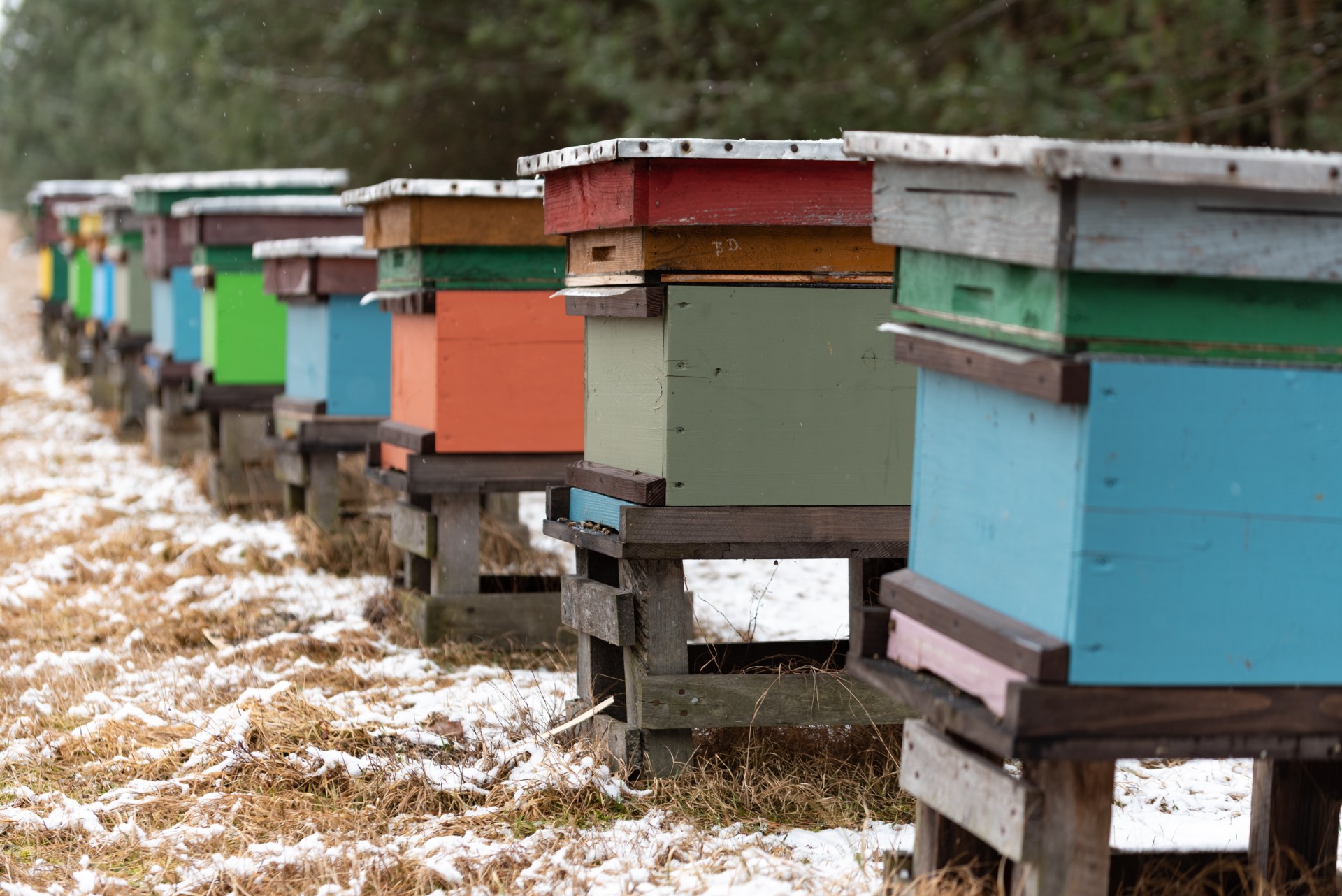One of the things many beekeepers learn over years of caring for their bees is how to best prepare for the changing seasons. Some states, like Florida and Texas, deal with extreme heat throughout the summer. Other states, like California, may have milder seasons swings, but winter for bees in California can also be challenging. Although most California beekeepers aren't worried about snowfall, they do have preparations to help bees that can't forage as much as they can in warmer times of the year. One of the great things about California is that bees here can leave the hive and forage most of the year. Winter doesn't drag on and on like some other parts of the country, which may be why California is where the pollination process begins every year.
Preparing for Colder Weather
When winter approaches, although it may look significantly different from region to region, bees do adapt, and beekeepers may choose to take specific measures to help keep bees healthy through winter until spring brings warmer weather. The primary concern for beekeepers as they prepare for the winter is food shortages. Due to the colder weather, mites are less of a problem, as they, like most insects, are more active in warmer temperatures. Honeybees do not hibernate, so when it is cold or rainy, they cluster together and use stored honey until they can come out and forage again. Some beekeepers will supplement with a sugary substance that bees can use for energy to keep the hive temperatures regulated.
Hive Protection
One way in which beekeepers can prepare for windy, rainy, and cold weather is to insulate the hives. Keeping the hives sealed prevents gusts of freezing wind and wet rain from entering the hive, which can cause damage. Although mite activity is lower in the cold weather, frames do still need to be monitored for hive health and mite infestations. Beekeepers may want to place hives under a securely propped-up tarp if heavy rains are expected for extended periods of time. The goal for honeybee keepers is to keep the hive healthy through the winter and have a thriving colony in the spring. Small measures can help during harsh winters, and new beekeepers can lean into more seasoned and experienced ones for advice and suggestions.
Changes in Bee Behavior
Bees naturally change their behavior in winter. Because honeybees don’t hibernate, they stay active inside the hive. Their body movement and wing speed can impressively regulate temperatures up and down to keep within the ideal thermal range of 90-95 degrees Fahrenheit needed for survival. Studies have shown that bee activity is constant throughout winter, as bees rotate from the inside, near the queen, out so no bee is left behind, and the warmth is consistent for the queen and babies. Activity burns energy, which is why when a shortage of food is available, it can put a hive at risk. Adding a supplemental source of food for bees can be beneficial, but it can also be problematic if they become dependent on it for survival. It is well accepted that supplementing bees in winter should only be done as beekeepers deem necessary.
Steps Every Beekeeper Can Take
Even in a mild climate like many parts of California, beehives still require maintenance. Some of the things that are recommended for winter preparation can also be applied to a regular schedule for monitoring and ensuring beehives are inspected and repaired as needed. Any spots that are damaged or exposed to the elements can be sealed to give bees the best chance of survival. Insulating hives with straw, foam boards, or other bee-safe materials while allowing for ventilation is a great way to help bees regulate temperatures in the hive.
Rodents may target hives because they are warm, and mouse guards can be added to hives to keep mice and rodents out without limiting bees' ability to get in and out as needed.

Get help with your beehive or bee swarm removal! Call Today 760-224-3040 Or 951-265-8292!
A Beekeeper's Role
Any unexpected weather, including hailstorms or freezes, should be monitored, and hives checked as soon as it is safe to do so. Placing hives in a protected space, elevating them, and monitoring them are ways to keep hives healthy until spring. If supplementary food is provided, it can be in syrup, fondant, or another form. Every beekeeper balances helping hives without interfering with their natural ability to adapt to environmental and climate changes. When the hives survive, and spring comes, bee activity will be back on the rise. If you notice hive activity inside a structure or need to have a beehive removed because it is a hazard, please ask for help from a professional bee remover, like D-Tek, who will remove the bees alive and find them a new home. After all these bees go through to survive the winter, the best thing to do is welcome them into spring and summer!
Click here to contact D-Tek today.
